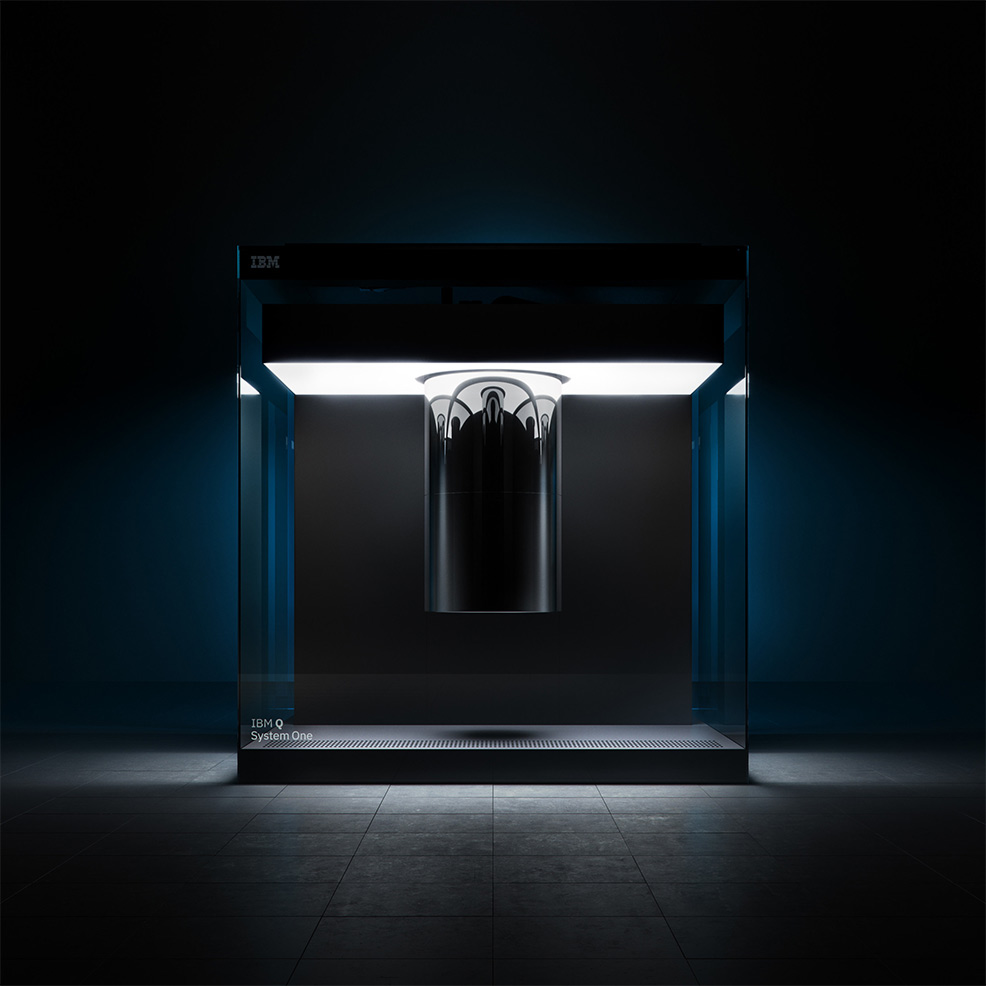
15th January 2019 IBM unveils quantum computer IBM has unveiled the IBM Q System One, its first integrated quantum computing system for commercial use.
IBM has unveiled the IBM Q System One, which it describes as "the world's first integrated universal approximate quantum computing system designed for scientific and commercial use." IBM also announced plans to open its first IBM Q Quantum Computation Center for commercial clients in Poughkeepsie, New York, in 2019. Quantum computers are expected to one day tackle problems that are too complex and exponential for classical systems to handle. Unlike the binary "bits" of traditional computing (each a simple "0" or "1"), quantum computers use "qubits" to represent multiple numeric values simultaneously, by exploiting the strange properties of subatomic phenomena. This allows quantum computers to perform tasks in a matter of seconds that would take a binary computer many thousands or even millions of years to complete. Some of the future applications of quantum computing may include:
"The IBM Q System One is a major step forward in the commercialisation of quantum computing," said Arvind Krishna, senior vice president of Hybrid Cloud and director of IBM Research. "This new system is critical in expanding quantum computing beyond the walls of the research lab as we work to develop practical quantum applications for business and science." IBM assembled a world-class team of industrial designers, architects, and manufacturers to work alongside in-house research scientists and systems engineers to design the machine – including Goppion, a Milan-based manufacturer of high-end museum display cases that protect some of the world's most precious art including the Mona Lisa at the Louvre, and the Crown Jewels at the Tower of London. Together, these collaborators designed a system to consolidate thousands of components into a glass-enclosed, air-tight environment. One of the most challenging aspects of quantum computing is to maintain, continuously, the quality of qubits. Powerful yet delicate, qubits can quickly lose their special quantum properties (often within 100 microseconds), due to ambient noise, electromagnetic waves, temperature fluctuations and vibrations. The IBM Q System One offers protection from such interference, through careful engineering and isolation. It features a nine-foot-tall, nine-foot-wide case of half-inch thick borosilicate glass, forming a sealed enclosure that opens effortlessly using "roto-translation" – a motor-driven rotation around two displaced axes engineered to simplify the maintenance and upgrade process, while minimising downtime. A series of independent aluminium and steel frames unify, but also decouple the system's cryostat, control electronics, and exterior casing, helping to avoid potential vibration interference that leads to "phase jitter" and qubit decoherence. The Q System One features 20 quantum bits, or qubits. To achieve so-called "quantum supremacy" over classical computers, most researchers believe that a milestone of somewhere in the region of 50 qubits will need to be reached. However, this may occur within a few years, as quantum computers appear to be following a trend like a somewhat slower version of Moore's Law, with a doubling roughly every seven years or so. IBM's Q System One is a major step towards that eventual goal. Another company, D-Wave Systems, has previously announced quantum computers featuring hundreds of qubits. However, these rely on a technique called quantum annealing with high error rates and are generally not accepted by researchers as true "universal" quantum computers.
Comments »
If you enjoyed this article, please consider sharing it:
|








